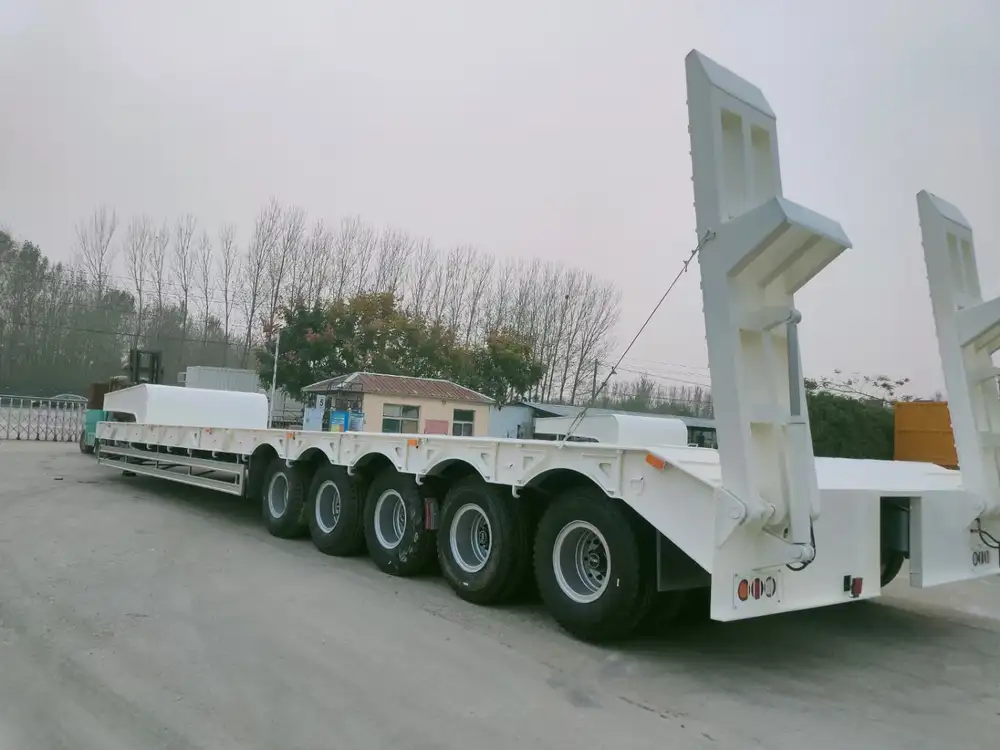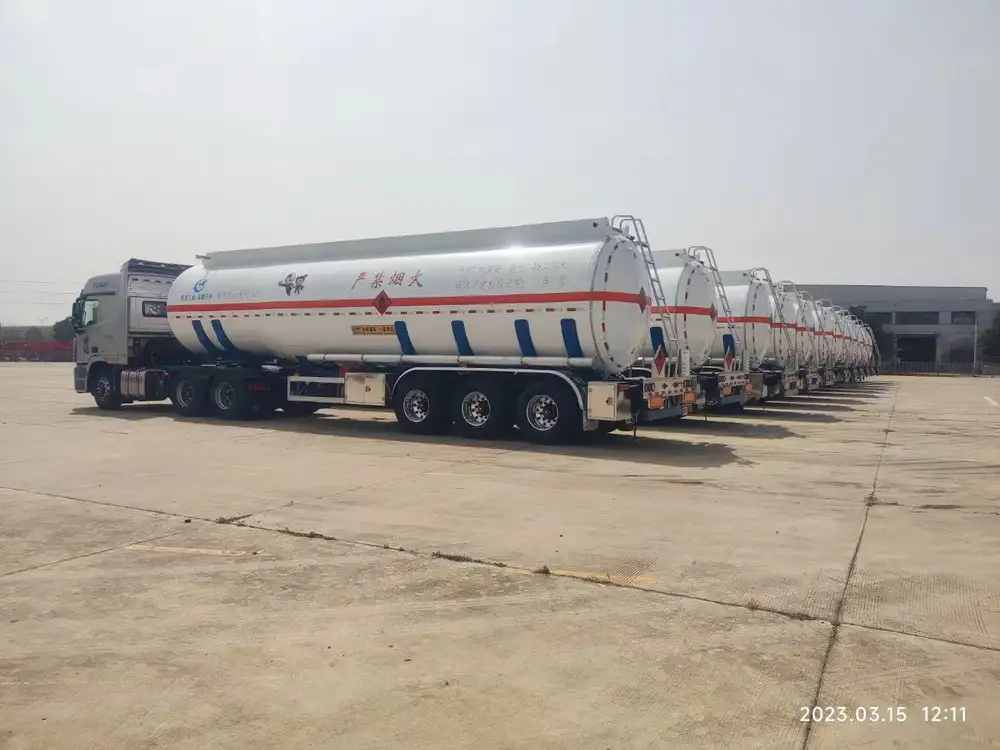Understanding the capacity of a semi-trailer is crucial for logistics, transportation, and construction industries, where volume and weight make the difference. This article delves into the calculation of cubic yards in a semi-trailer, bringing to light essential insights for manufacturers, shippers, and buyers.
What is a Semi-Trailer?
A semi-trailer is a large truck trailer that requires a connection with a tractor unit for transportation but lacks a front axle. The combination allows for high payload capacity, making them vital in the transportation sector. Knowing the volume it can carry will help businesses optimize shipping processes, cut costs, and improve operational efficiency.
Semi-Trailer Types and Dimensions
In the market, there are several types of semi-trailers, each varying in design and capacity. Below is an overview of the most common types:
| Type | Length (ft) | Width (ft) | Height (ft) | Typical Volume |
|---|---|---|---|---|
| Standard Dry Van | 53 | 8.5 | 13.5 | 3,226 cubic feet (~119.6 cubic yards) |
| Reefer (Refrigerated) | 53 | 8.5 | 13.5 | 3,226 cubic feet (~119.6 cubic yards) |
| Flatbed | 48 or 53 | 8.5 | 5 to 6 | Variable based on cargo |
| Step Deck | 48 or 53 | 8.5 | 10 to 11 | Variable based on cargo |

Calculating the Volume of a Semi-Trailer in Cubic Yards
To determine how many cubic yards are in a semi-trailer, one must first understand the relationship between cubic feet and cubic yards. Since 1 cubic yard is equal to 27 cubic feet, we take the total volume in cubic feet and divide by 27.
Formula:
[ \text{Cubic Yards} = \frac{\text{Volume in Cubic Feet}}{27} ]For example, a standard dry van trailer with a capacity of 3,226 cubic feet would calculate as follows:
[ \text{Cubic Yards} = \frac{3,226}{27} \approx 119.6 ]This means that a 53-foot standard dry van can carry approximately 119.6 cubic yards.
Factors Affecting Semi-Trailer Capacity
Not all loads are created equal. Various factors can affect the effective loading volume and weight:
Type of Load – Different materials have varying densities. For example:
- Dense Material: If transporting rocks, the weight will be high, limiting the volume transported.
- Light Material: Shipping materials like insulation might allow for maximum volume without nearing weight limits.
Loading Style:
- Stacking: Proper stacking can maximize volume, but there’s a risk of damaging goods.
- Bulk vs. Palletized: Bulk loads can fill every available cubic inch, while palletized loads leave gaps.
Height Restrictions: Depending on bridge and tunnel heights, you might not be allowed to use the full height capacity of the trailer during transport.
Weight Regulations: Different states have weight limits affecting how much can actually be loaded, often leading to reduced volume usage.
Practical Examples of Load Calculations
To further clarify computations, we can classify potential load types commonly transported in semi-trailers alongside their unique space consumption.

Example Load Types and Their Wheeled Volume
| Material | Density (lbs/cubic yard) | Weight of Full Load (lbs) | Cubic Yards Used |
|---|---|---|---|
| Dry Goods (Cereal) | 10.5 | 1,200 | 114.3 |
| Gravel | 45.5 | 5,000 | 110.0 |
| Fresh Produce | 30 | 900 | 30.0 |
| Machinery Parts | 50 | 1,200 | 24 |
Based on these variables, the load strategy should align with both the nature of materials being transported and state regulations.
Common User Queries Addressed
1. Can I Stack Pallets in a Semi-Trailer?
It’s common to stack pallets to maximize trailer capacity. However, ensure the total weight does not exceed gross weight regulations, and consider the height to maintain loading balance and vehicle safety.
2. How Do I Choose the Right Semi-Trailer?
Consider the following factors:
- Type of Cargo: Width and height constraints might dictate the best semi-trailer type.
- Distance to Deliver: For long distances, choose trailers with better aerodynamics.
- Loading Equipment: Ensure your loading and unloading equipment is compatible with the type of trailer.
How to Optimize Load Efficiency
Maximizing the use of trailers in terms of cubic yards involves meticulous planning. Here’s a structured approach to optimize loads efficiently:

Step 1: Detailed Inventory Assessment
Make a precise inventory list for loads, categorizing items by their density and common dimensions. Identifying which loads can be stacked versus transported individually will lead to better planning.
Step 2: Route Planning
Utilize logistics software to optimize routes. Shorter routes may allow the use of heavier loads in instances where density plays a significant role.
Step 3: Consultation with Experts
Regularly consult with logistics experts to aid in flow optimization, especially if dealing with temperature-controlled shipments.

Step 4: Monitor and Adjust
Track shipment performance over time using analytics tools. Adjust strategies based on data such as transit times, cargo damage incidents, and weight-limit violations.
Conclusion
In summary, knowing how many cubic yards are in a semi-trailer is vital for efficiently managing load capacities, especially for those in the freight and logistics industries. With careful calculations, considerations for cargo types, and strategic planning, one can maximize the efficiency of transportation operations.
Through a blend of understanding trailer specifications, calculating effective load volumes, and optimizing routes, businesses can ensure they are not only compliant with the law but also maximizing profitability in each shipment. As the transportation landscape continues to evolve, maintaining this knowledge will remain key for any manufacturer or transporter navigating the complexities of logistics.
By leveraging this information comprehensively, semi-trailer users can enhance their operations while addressing weight limits and maximizing cargo space. Everything begins with these fundamental principles of calculating cubic yards, and as the industry develops, these will serve as a solid foundation for future advancements in trailer usage and transportation efficiency.



